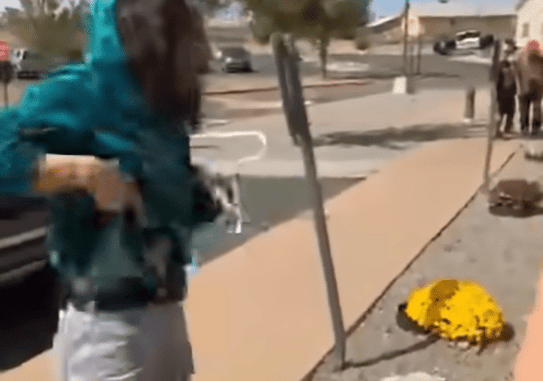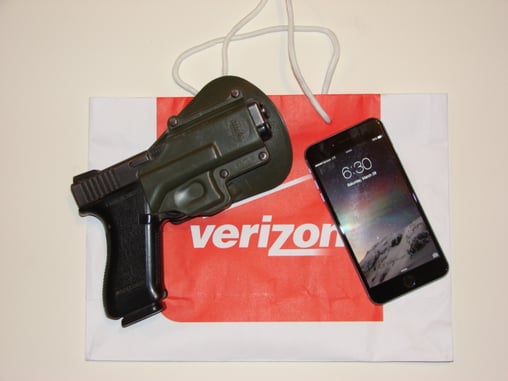The human mind is amazing. If our brain was the crowded room of a restaurant, all the distinct voices get lost in a sea of rolling static. A waiter rolls out a cart of drinks, a chef quickly taps a bell to let the server know a meal is up. Two businessmen casually remark about the stock market. The second a threat is detected, though, all of that stops on a dime. The relaxed, languid environment suddenly becomes a dictatorship. Priority goes to your senses – eyes, ears, nose, taste, feel. Your kidneys, the boiler room of the kitchen, start amping up the furnace and stoking a fire within.
In an actual life or death situation, your conscious mind could barely be said to exist at all. Your neurons are firing – looking for threats, responding to threats, deciding whether to run, stand still, or attack.
There’s a reason why your particular brain is good at what it does: you’re alive. If one of your ancestors decided to hesitate when someone else was swinging a club at his or her head, he wouldn’t be here and neither would you. But unlike your ancestor, you’re faced with a new problem: tunnel vision.
Because we generally train at shooting ranges that only offer 12 o’clock target shooting – our brains are naturally geared to assess for threats directly in front of us. But in reality, the threat can be 360°. But being completely aware of what is happening around you for all possible angles is impossible.
Additionally, your field of fire is severely limited. Your field of fire can be described as the area directly in front of the muzzle of your firearm. You can’t shoot something outside of your field of fire without repositioning or movement.
Your active field of view broken down into two major categories:
- Useful Field Of View (UFOV)
- Active Field Of View (AFOV)
The active field of view incorporates your periphery – what you see from out of the corners of your eyes. These objects are generally blurry and hard to identify. Your useful field of view is the actual range of objects in front of you that you can see and focus on.
These two parameters will change depending on the specific person, that person’s age, and physiology. Scientists conduct UFOV tests to determine peoples perception when driving motor vehicles.
The problem? In a life or death situation, the active shooter will generally revert back to the scenario he has trained the most for – 12 o’clock shooting. This is also referred to as tunnel vision.

So, right from the start, most concealed carriers will greatly limit their useful field of view — the only means they truly have of determining friend from foe. Tunnel vision limits the shooter’s ability to see potential threats (or allies) approaching from the remaining ~340°.
We’ll discuss five ways to cure tunnel vision.
- Broad To Tight Shooting — Shooting With Both Eyes Open
When practicing at the range, before opening your first volley, don’t immediately bring the gun to your eye. Your brain knows the target is in front of you but look around the target as well. This ties back to situational awareness and the fundamental safety principle, “know what is in front and directly behind your target“.
By the time you gain front sight post alignment with target, your field of view is effective only on that target. This is an excellent example of tunnel vision. That’s great for marksmanship but horrible for situational awareness.
Try shooting with both eyes open. If you need to squint your non-dominant eye to gain better sight picture – do it. This keeps that front useful field of view as open as possible until the last second.
- Active Scan – Far Left To Far Right Sweep
Before drawing your pistol at the range, try scanning your entire field of view. You don’t have to spin around and look behind you – simply pivot with your legs and hips to get a good idea of what is to your far left to far right. Then, engage your target. After engaging your target, immediately scan back across.
- Active Scan – Diagonals And Horizontals
Unless you’re fighting in an open field or in the confines of a room, you have the potential for enemies and non-combatants to enter the scenario from above or potentially below. Actively scan at oblique angles to where you’re postured.
- Active Close Quarters Movement – Sidestep, Advance, Withdraw
With your feet shoulder width apart, you can effectively step forward, back, side-to-side, and even turn around without leaving your central location. This is a good technique to practice to force your field of view to move along with your field of fire.
Remember when practicing this at the range – your field of fire always needs to be pointed in a safe direction.
- Active Movement To Cover
In an actual gunfight that lasts longer than one bullet, you need to find cover immediately. That means active scanning (as discussed in previous steps) and active movement (also described). For this, you will need to scan a full 360° to first identify targets in your field of view and then identify potential cover. Remember – cover works both ways. It limits your field of view and your field of fire – but it also makes you a much harder target to hit.
The easiest cover to advance towards will be that to your direct front or oblique angles to the left or right. Retreating to cover will always leave you exposed but sometimes the risk is worth the reward.
Once positioned behind cover, practice all these previous techniques to really drive home how important it is to never be too focused on what’s directly in front of you. It’s not just bad guys you’re looking for — it’s also potential allies or non-combatants as well.




![[VIDEO] This Armed Robber Wants To Sue His Attacker For ‘Excessive Force’](https://imagedelivery.net/sbm_lYeJbALkepJgtmRD5w/concealednation.org/2017/09/ScreenHunter_1043-Sep.-22-15.21.jpg/w=728,h=381)






![[WATCH] CA Business Owner Sleeps At Store After It Was Broken Into, And The Thieves Came Back](https://imagedelivery.net/sbm_lYeJbALkepJgtmRD5w/concealednation.org/2019/01/ScreenHunter_1899-Jan.-16-20.43.jpg/w=728,h=381)


